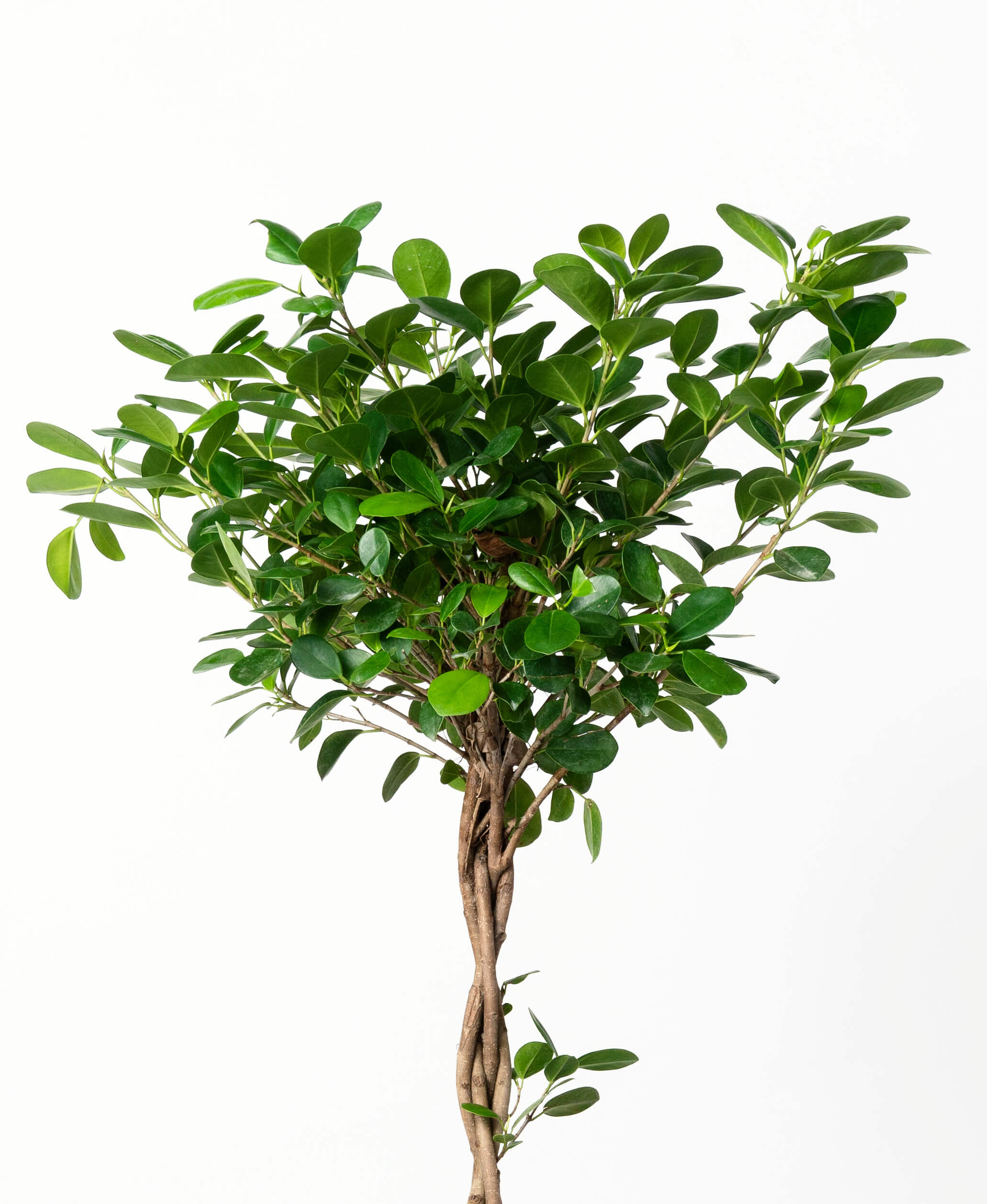First, let’s clean up your plant. This allows the plant to direct its energy to new healthy growth.
- Remove the entire brown leaves (they will not turn green again) or the effected portion with a pair of sharp scissors or pruning shears.
- Wipe the blades of your scissors with rubbing alcohol between each snip.
- You may need to trim your plant in stages because you never want to remove more than 20% of the affected leaves at one time–this could shock your plant.
Now, let’s get your Ficus feeling like herself again.
Incredibly dry soil
Be sure you’re not underwatering your Ficus. Keep a consistent watering schedule–water when the top 1-2” of soil are dry.
If you accidentally let the soil dry out completely, you may see leaves droop, crisp up, brown, and fall. If the soil is extremely dry all the way through the pot, a good soak is in order.
Here’s how to soak-water your plant:
- Place your plant in your sink or tub without the saucer. Fill your basin up with about 3-4″ of water. Make sure the water isn’t hot!
- Allow your plant to soak up water through the drainage hole in the bottom of the pot for at least 45 min.
- Feel the top of the soil after your plant has been soaking–has the water reached the top 2-3” of soil?
- If not all the soil feels saturated, water your Ficus Danielle slightly from the top of the soil to help speed up the saturation.
- When your plant’s soil is evenly damp, drain the sink/tub and allow the plant to rest while it drains thoroughly. Place the plant back on its saucer and back in its proper spot.
Keep in mind that when the soil goes from bone-dry to saturated, it can cause stress for your Ficus and may cause leaves to drop. Give it some time to adjust.
Not enough humidity
Your Ficus may be crisping up from a lack of moisture in the air. Here are some ways you can increase humidity for your plant:
Mist!
One of the easiest ways to bring a boost of humidity to the plant’s surrounding environment is by misting its leaves with filtered or distilled water. Depending on how dry your environment is, you may need to mist several times a day.
Make a pebble tray
Pebble trays are another easy DIY solution to increase humidity around a plant. You don’t want a plant’s roots sitting in water, so to prevent that from happening, add clean pebbles in a shallow water-filled tray. The water level should not be above the pebbles. Place the plant on top of the tray. The water will gradually evaporate around the plant, boosting humidity.
Get a humidifier
Humidifiers can be a benefit to both people and plants during the winter months. While heaters and fireplaces can dry out a living space, a humidifier adds much-needed moisture to the air. Always follow the instructions regarding where to place it in your home.
Give your plant a shower
Give your high humidity-loving plants a lukewarm shower for 30 seconds. Not only does this increase humidity, but it also rinses off any dust or debris, and discourages pests from taking up residency.










